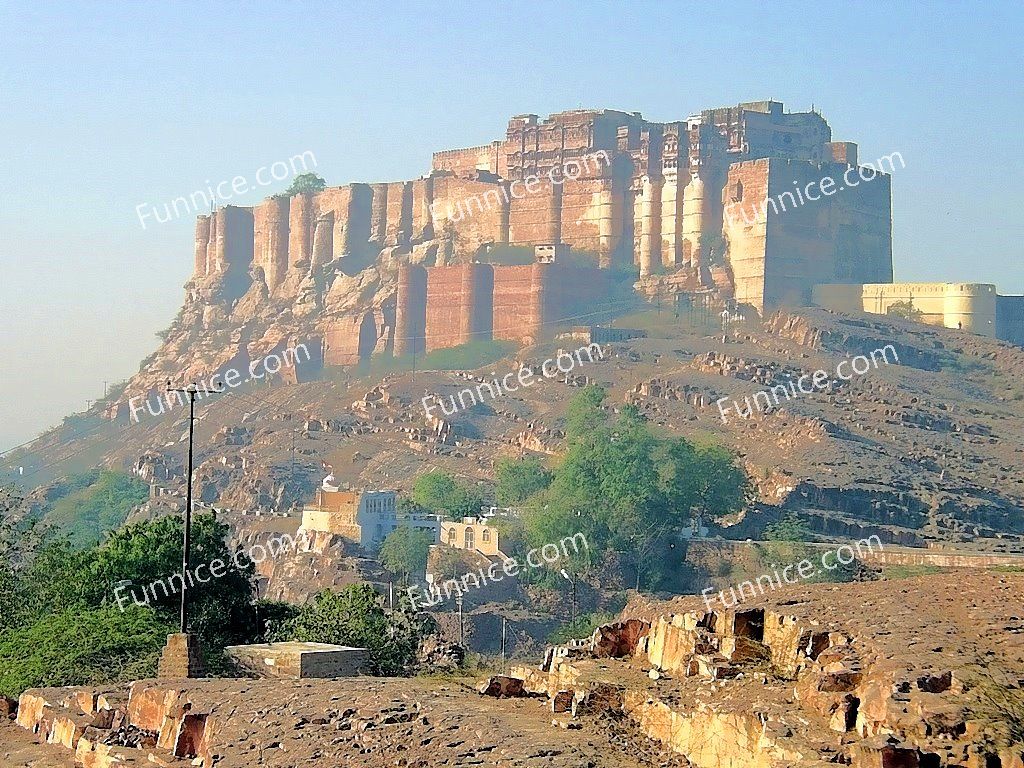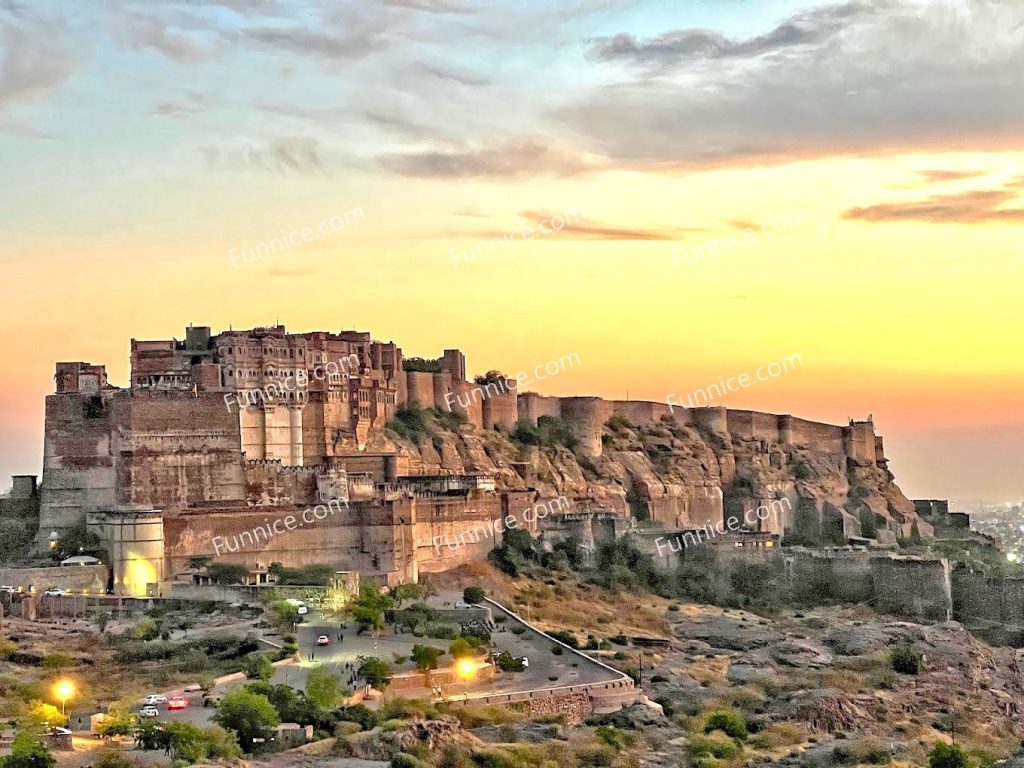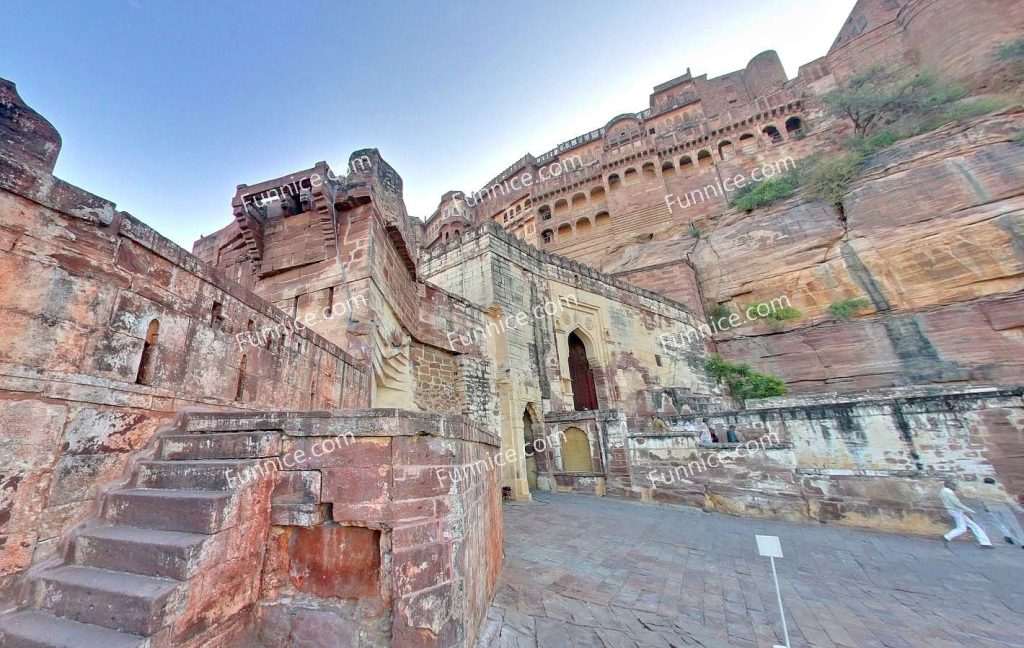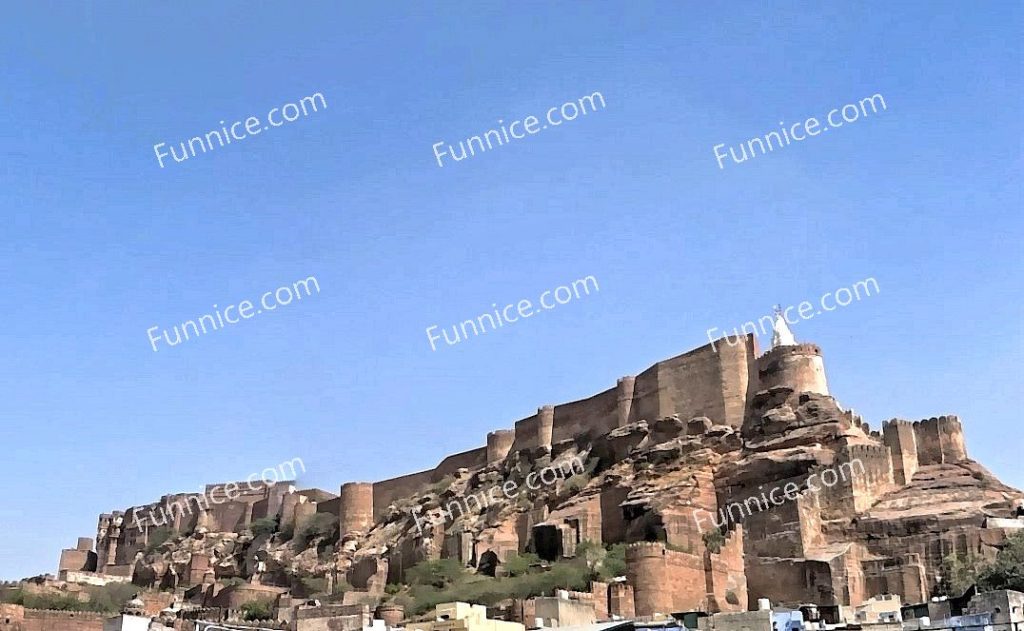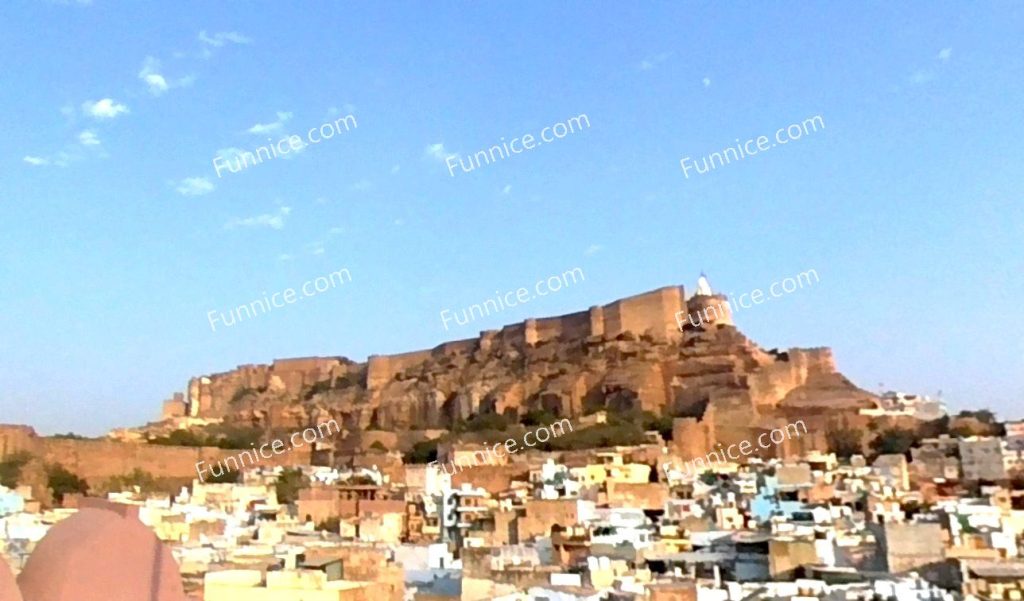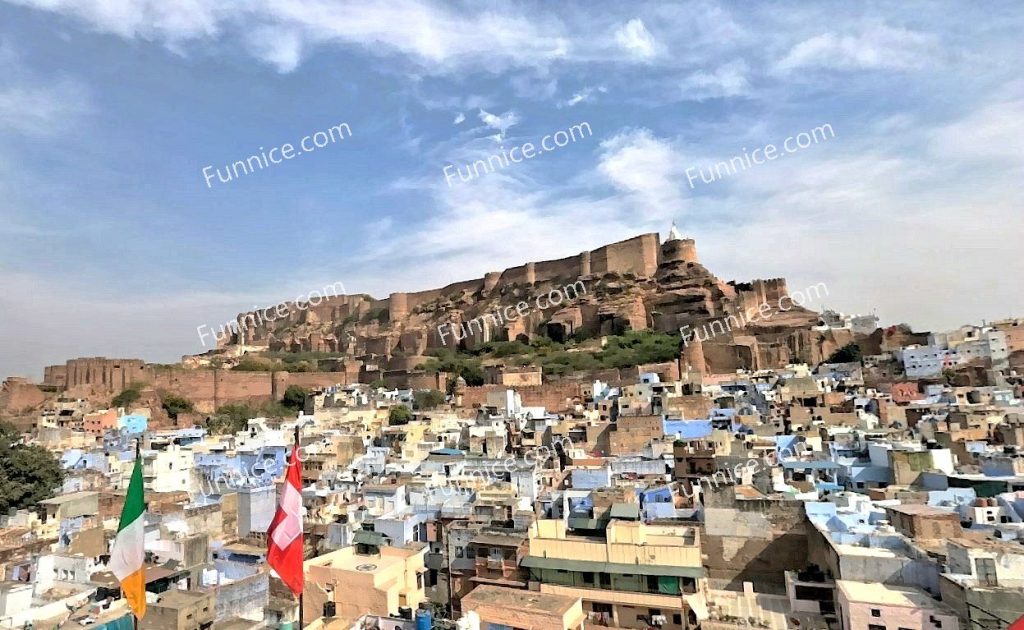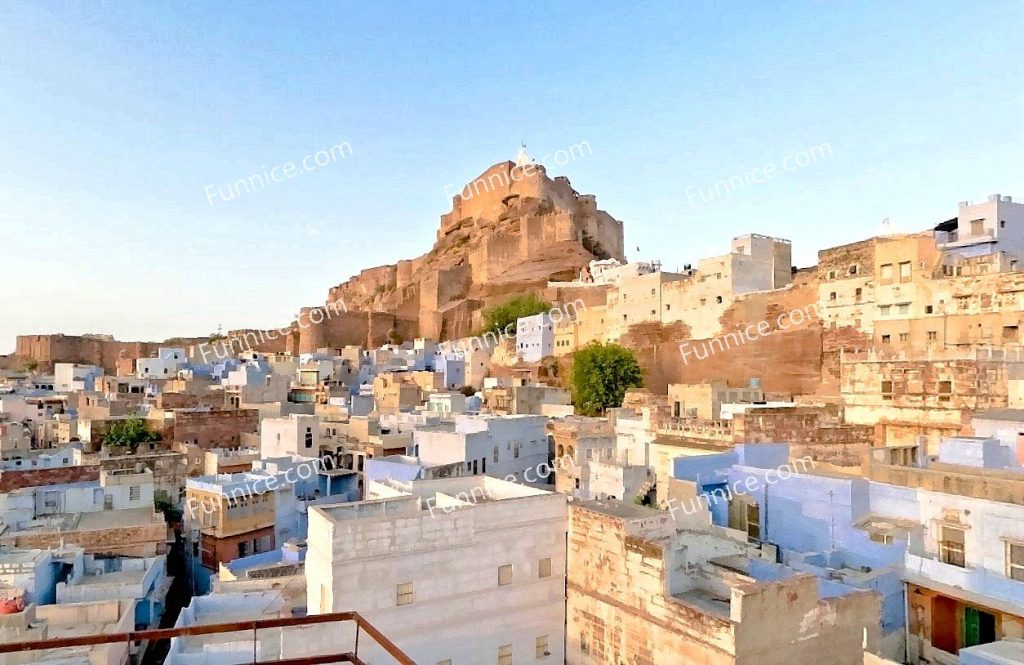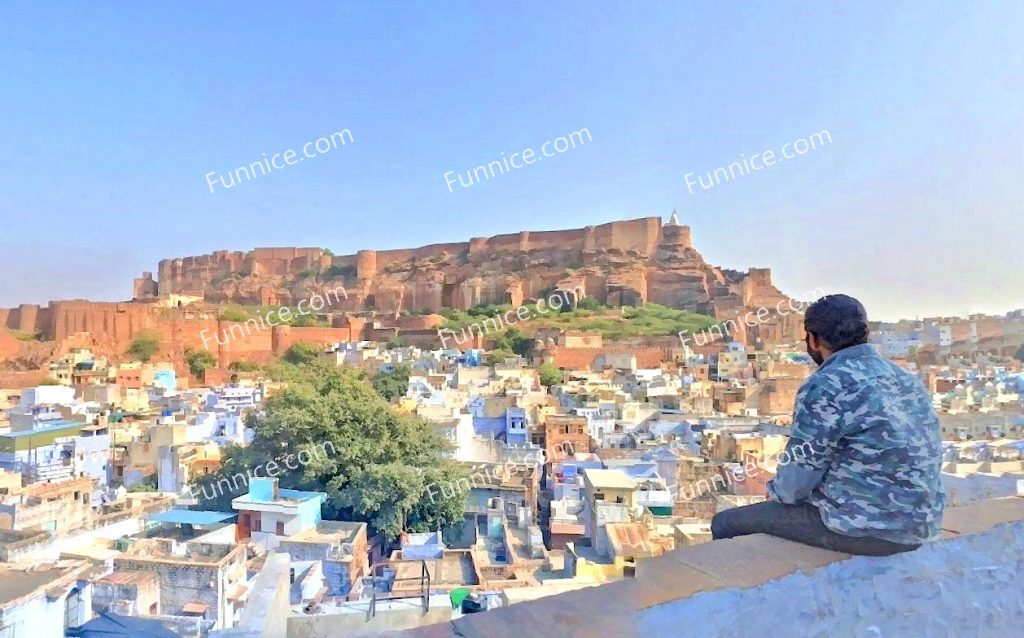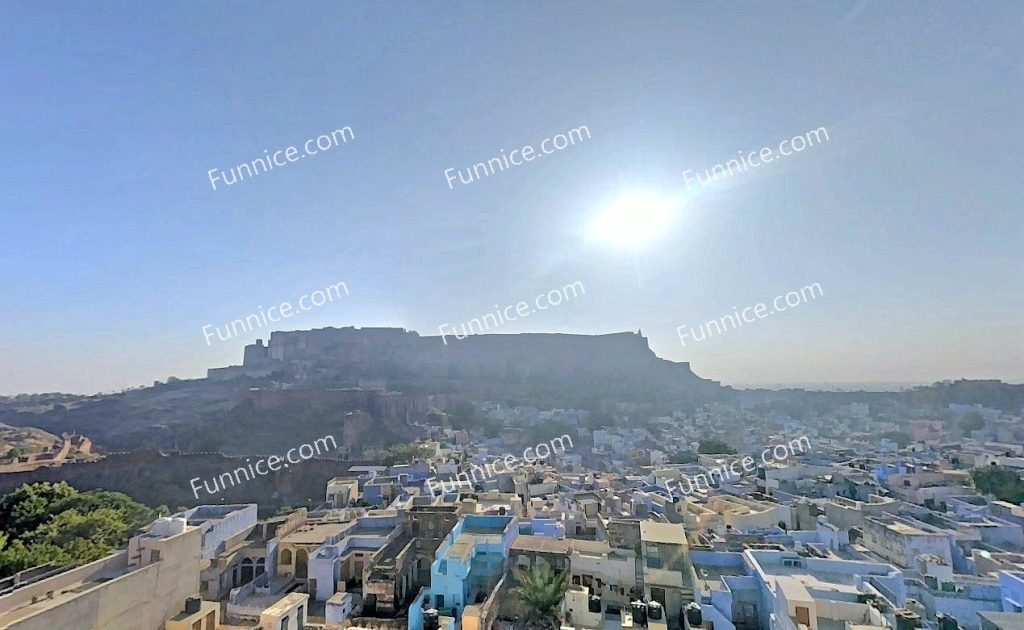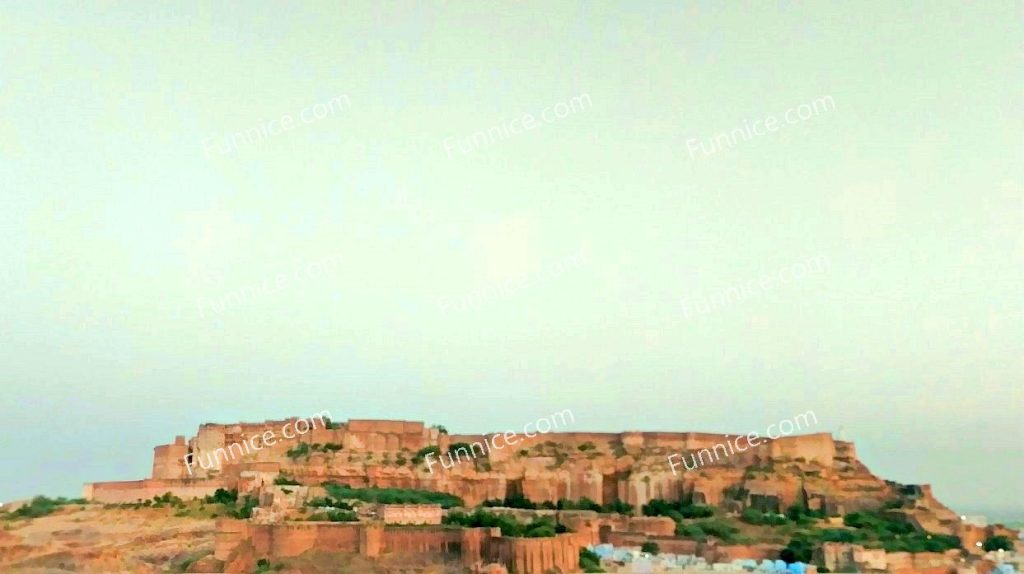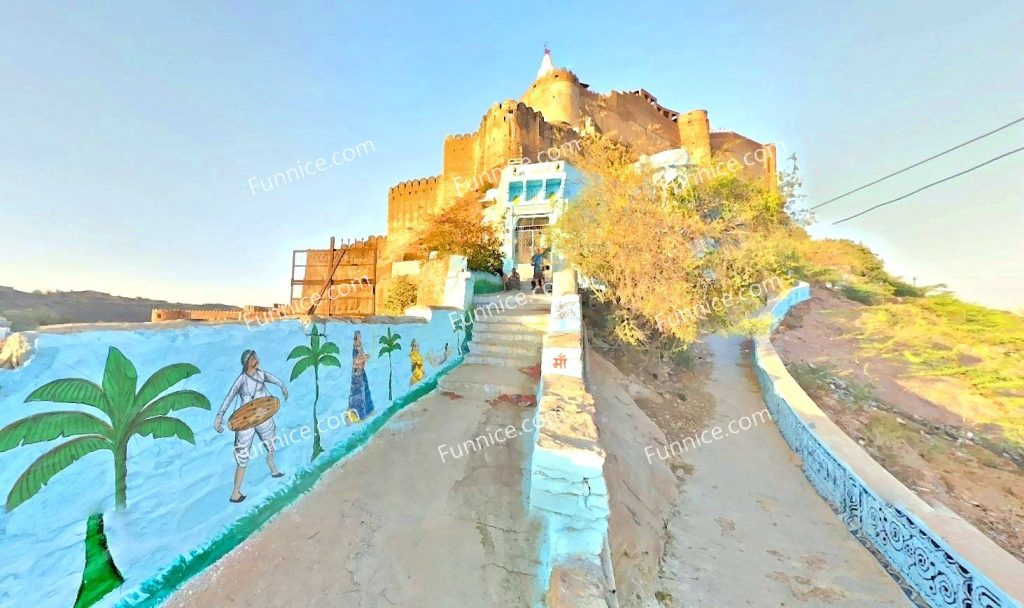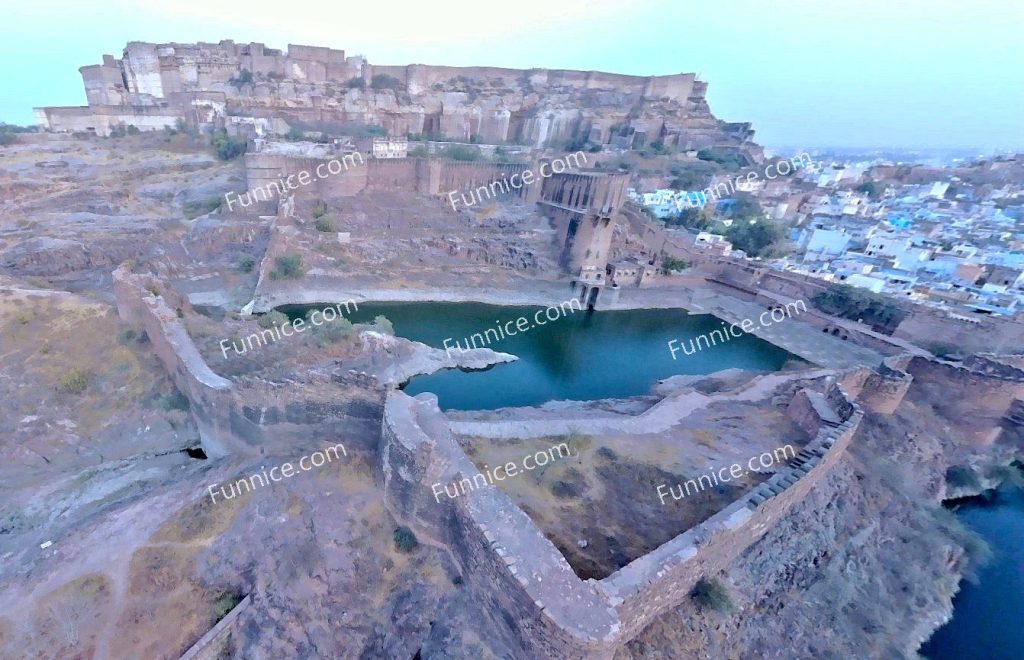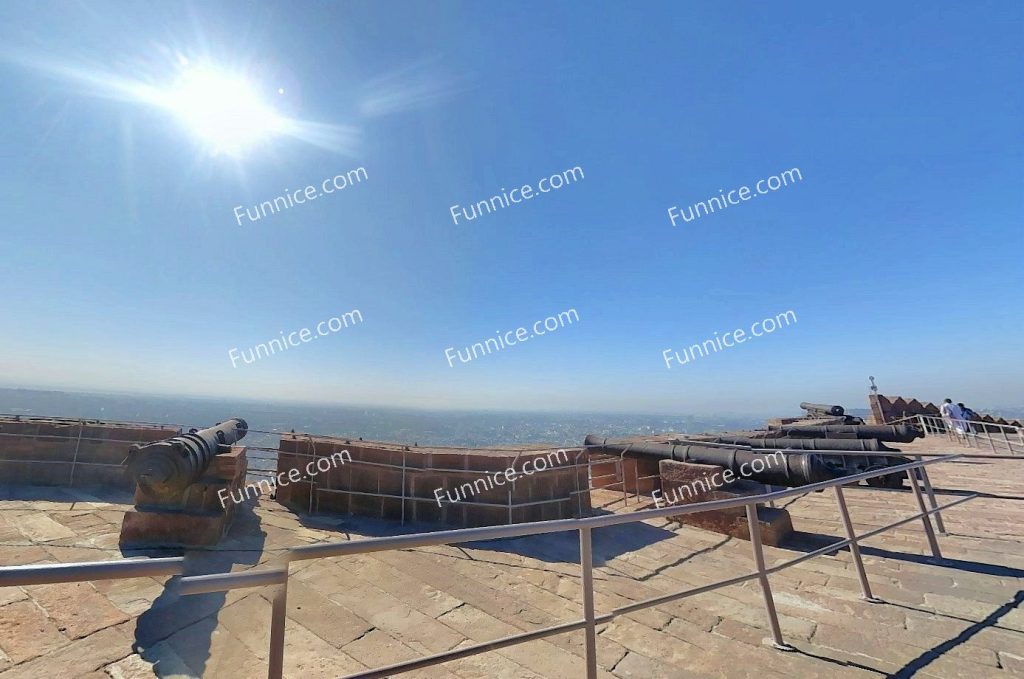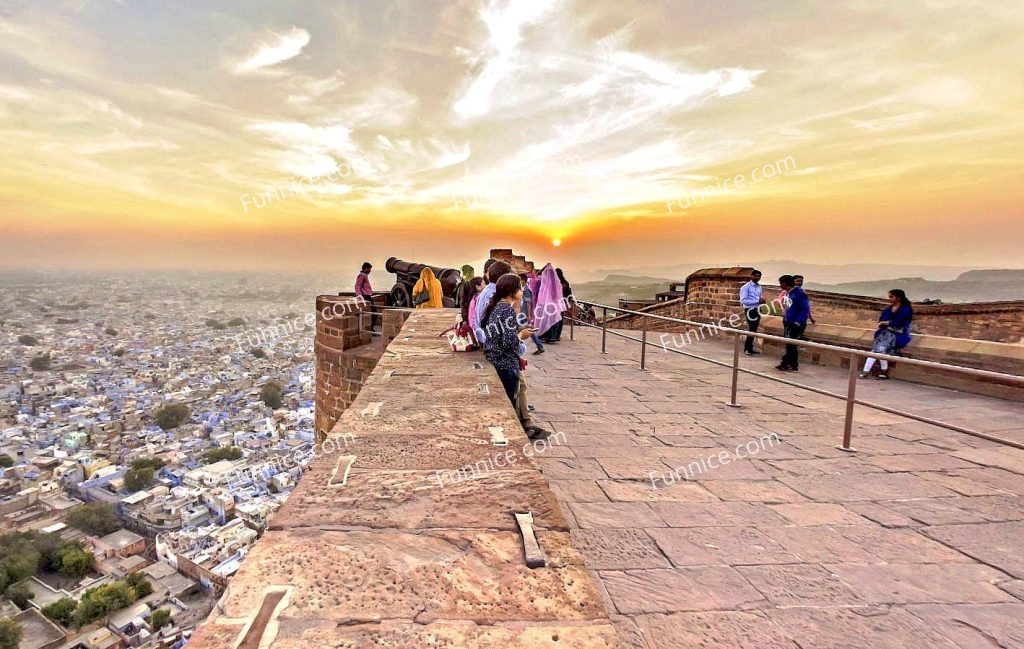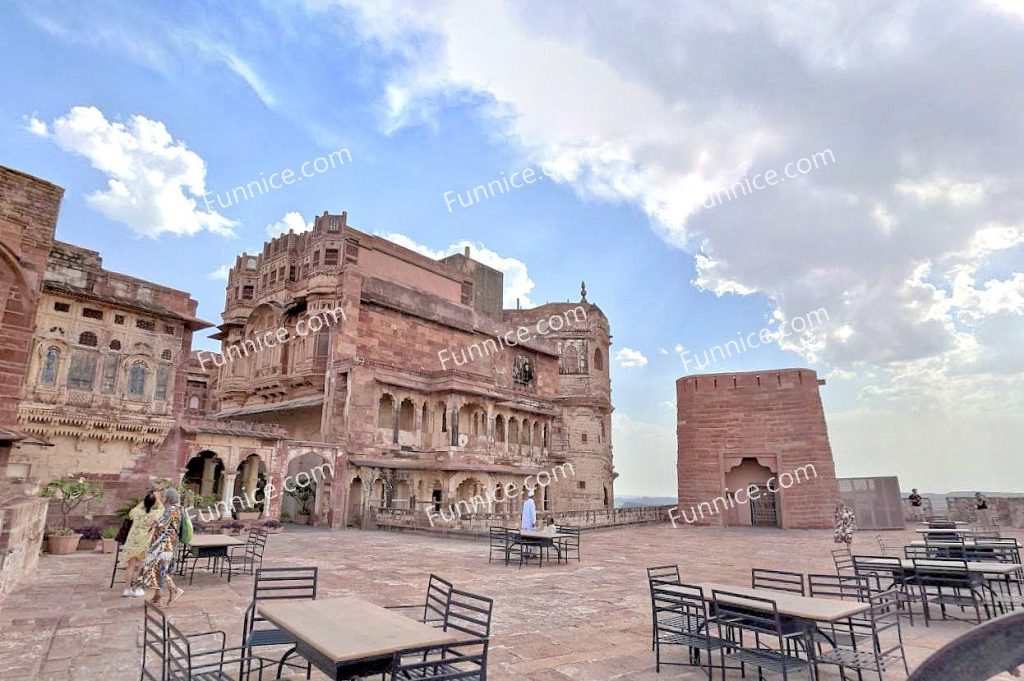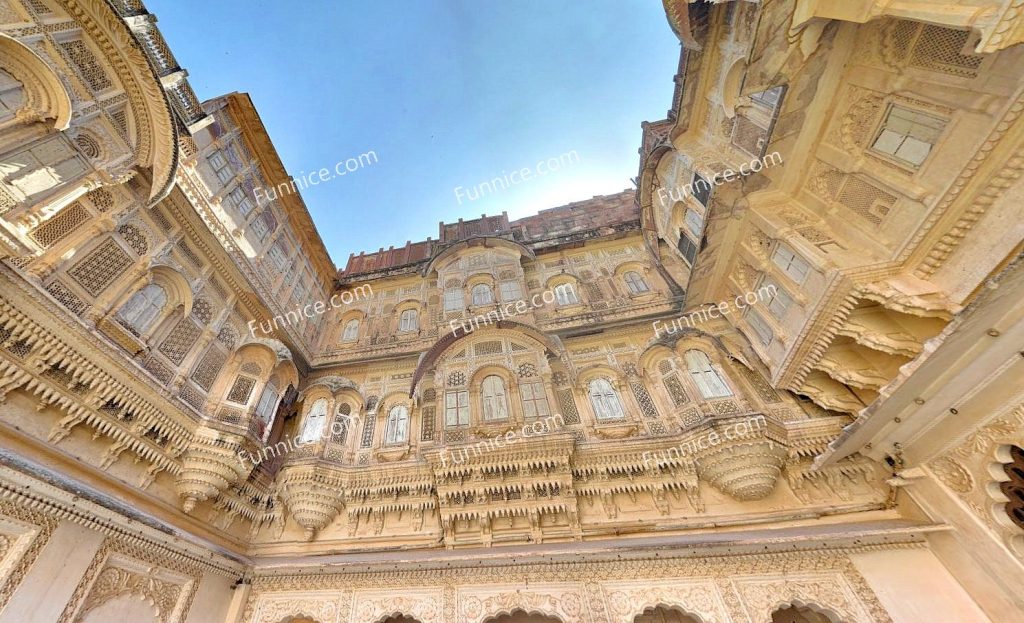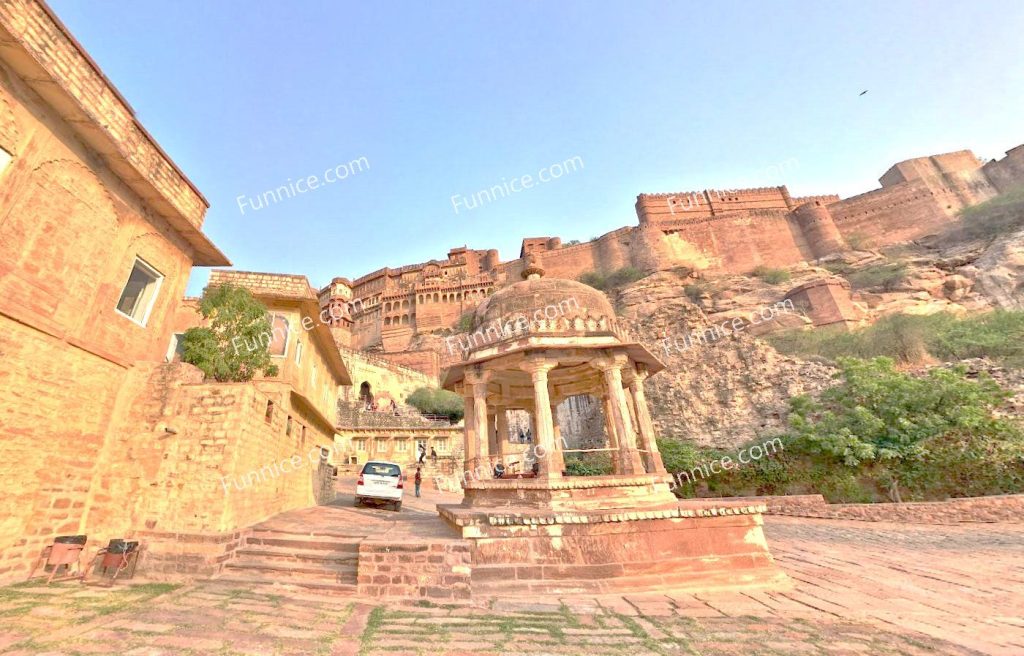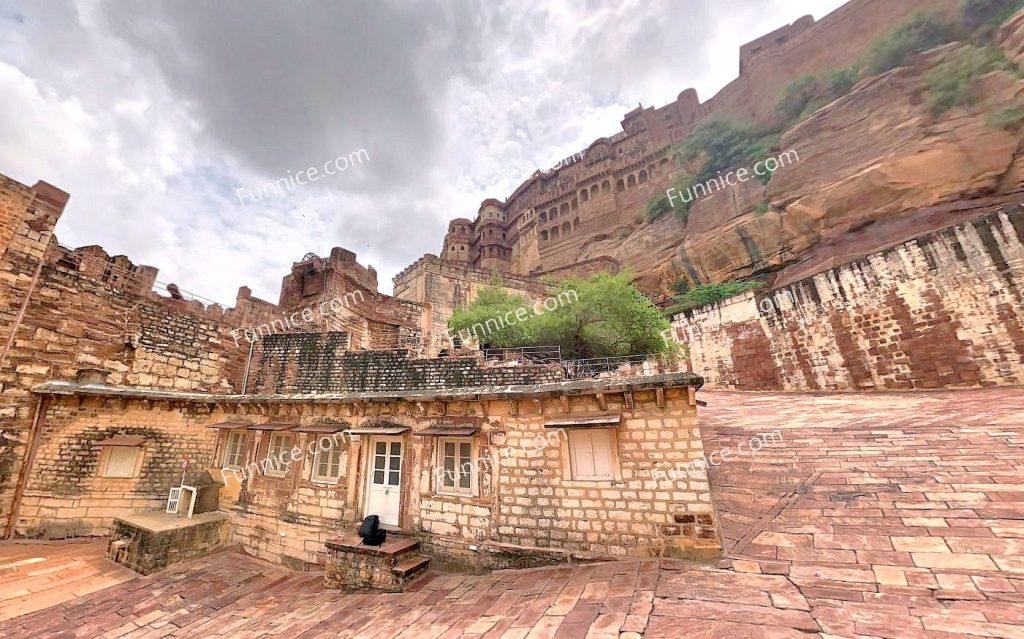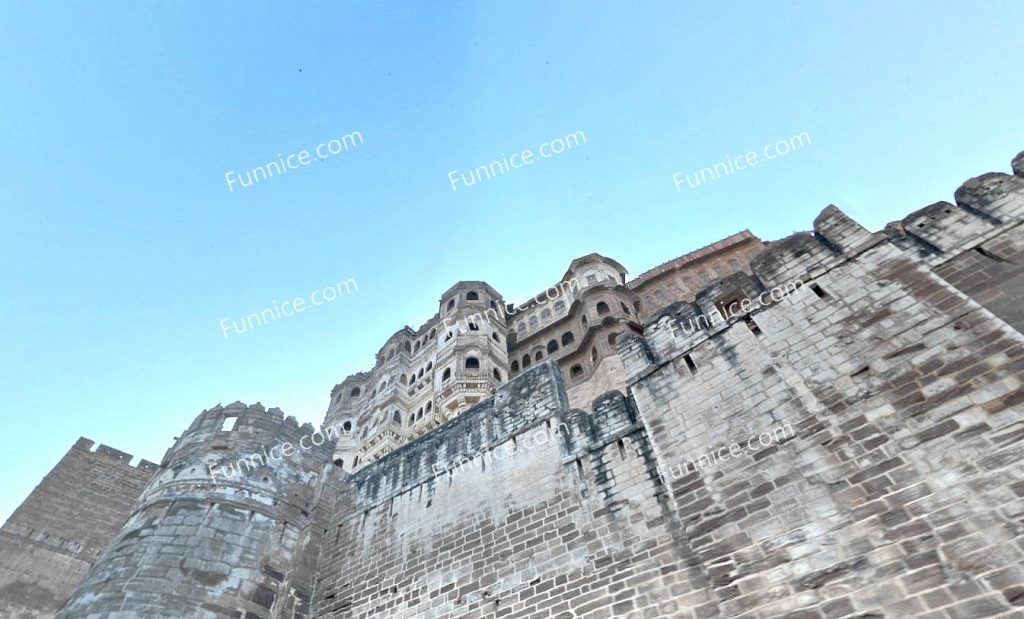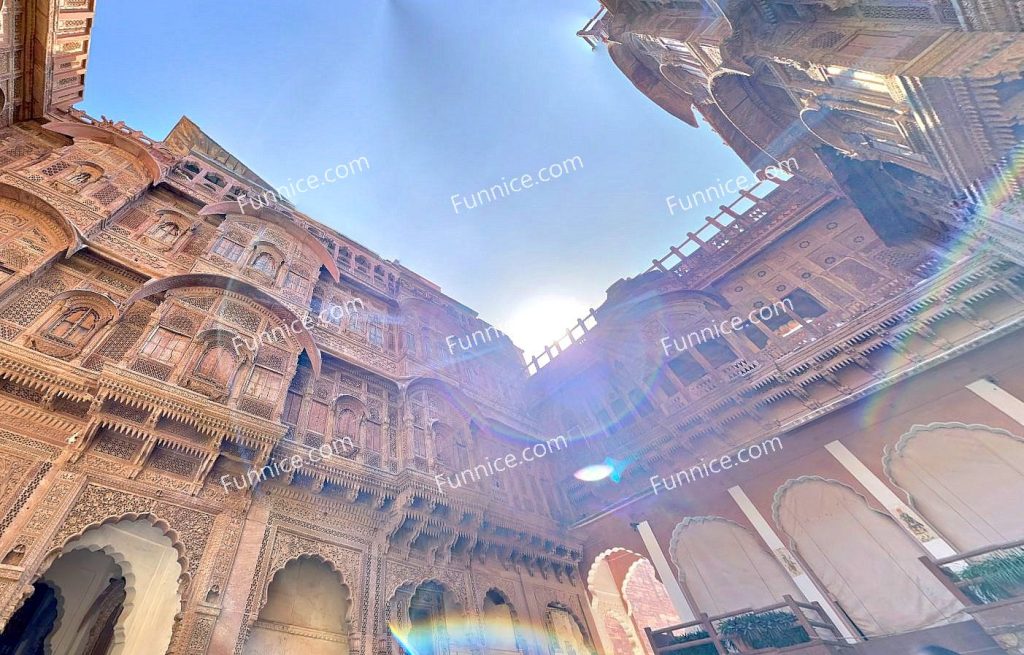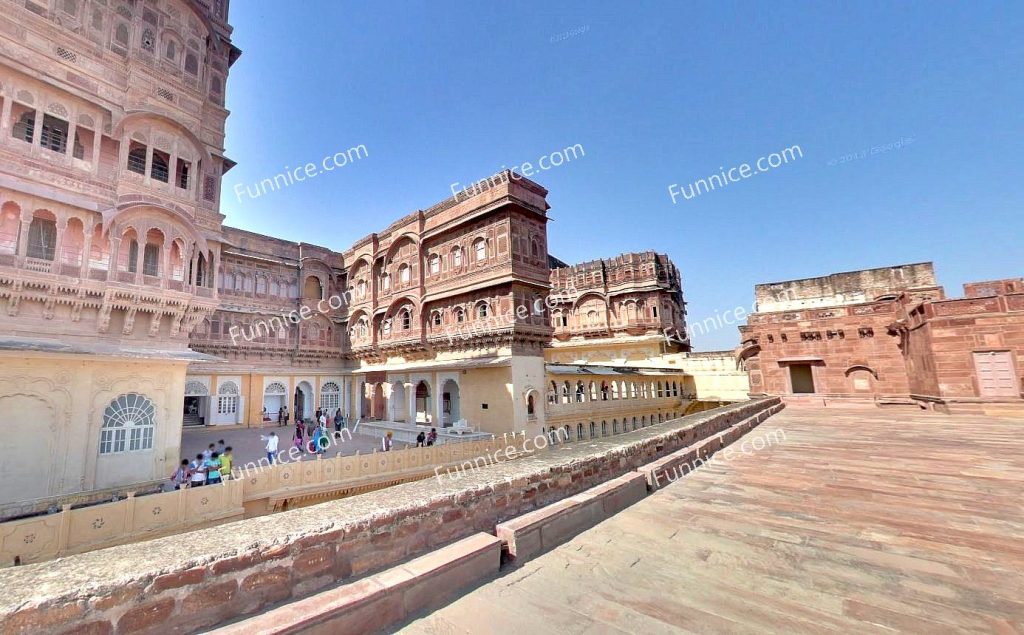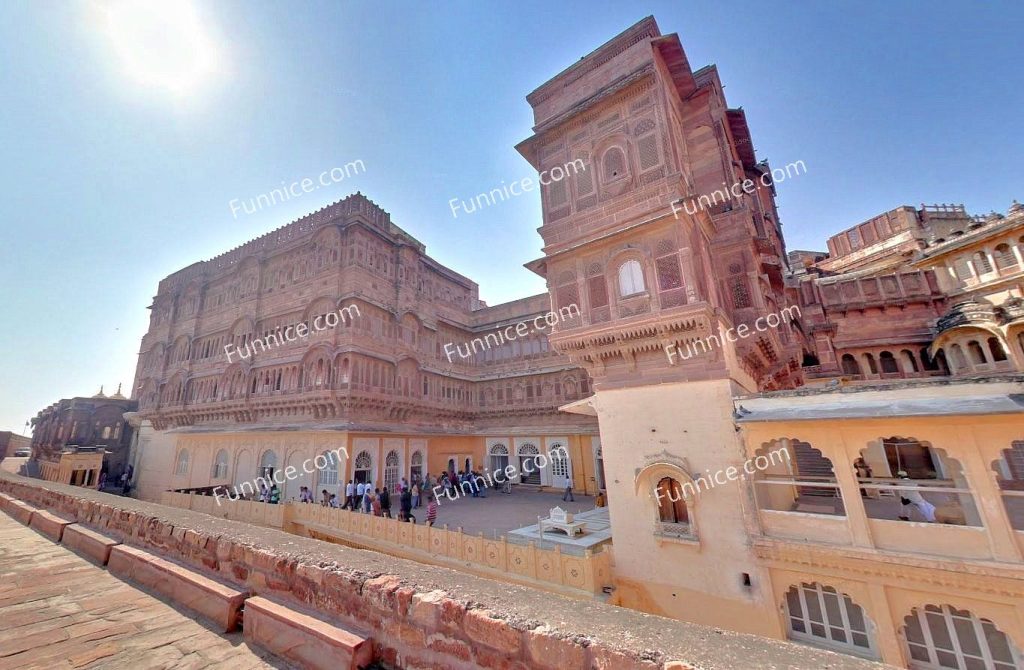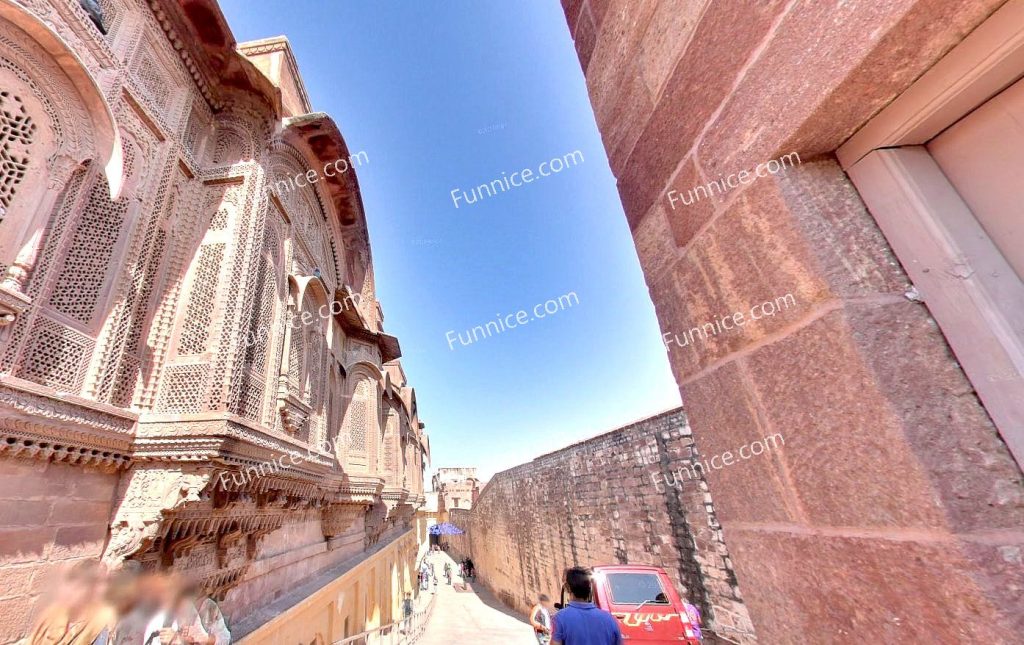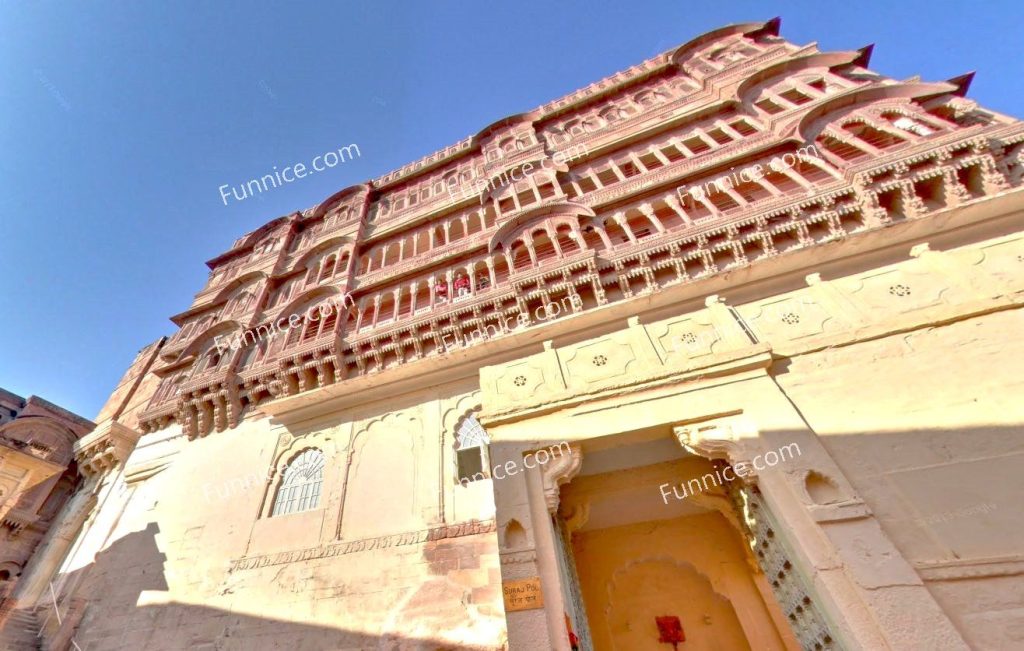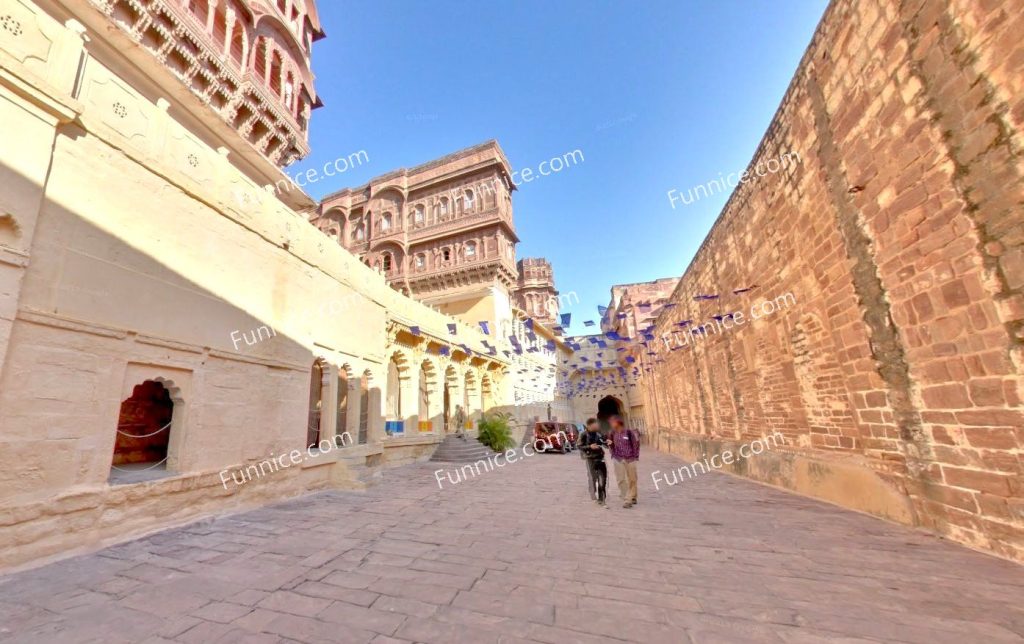The Sun Fortress of the Blue City
Perched atop a hill overlooking the city of Jodhpur in Rajasthan, India, stands the imposing Mehrangarh Fort, also known as the “Sun Fortress.” More than just the most striking landmark of Jodhpur, this fort has witnessed centuries of dynastic changes and royal glory. No matter where you stand in the old city, you can always see it towering above, like a solemn guardian watching over the enchanting “Blue City.”
Built in 1459 by Rao Jodha, the founder of Jodhpur, Mehrangarh Fort was strategically constructed on a 125-meter-high cliff to protect his kingdom. However, legend has it that the land was originally home to a hermit who was forced to relocate. In retaliation, he cursed the fort, dooming it to a perpetual water shortage. Despite the king’s attempts to appease the gods, Jodhpur’s arid climate seems to validate this ancient tale.
Expanded and restored over the centuries, Mehrangarh Fort has transformed from a mere military stronghold into a stunning architectural masterpiece that combines rugged defense walls with the exquisite intricacies of royal palaces. It stands as a testament to the grandeur of the Rajput dynasty.
To enter Mehrangarh Fort, visitors must first pass through security and purchase tickets at the outer gate near the parking area. Following the designated path, they ascend a zigzagging slope equivalent to climbing 7 to 10 stories in height. Along the way, they pass through seven grand gates, each with its own historical significance:
Jai Pol (Victory Gate), commemorating Jodhpur’s triumph over Jaipur and Bikaner in 1806.
Loha Pol (Iron Gate), still bearing the handprints of queens who performed Sati, an ancient ritual of self-immolation, evoking a poignant reminder of past traditions.
Beyond these gates lies the heart of the fortress, where the opulence and power of the royal family are on full display.
The Magnificence and Intricacy of the Inner Palace
As the main courtyard of Mehrangarh Fort, Sringa Chowk has hosted grand receptions and coronation ceremonies. In 1952, the present Maharaja of Jodhpur was also crowned here. Standing in this historic space, one can almost envision the regal grandeur of the past.
The oldest chamber within the fort, Moti Mahal was built in the 16th century as the king’s private audience hall. Its ceiling is lavishly decorated with gold leaf, crushed seashells, and mirrors, exuding an air of luxury. The five resplendent stained-glass windows cast mesmerizing hues across the room when sunlight streams through, creating an almost dreamlike ambiance.
During Jodhpur’s golden era, Phool Mahal served as a royal entertainment hall, where the king enjoyed dance and music performances. Every inch of the palace, from the carpets and pillars to the windows and ceiling, is meticulously adorned. The intricate paintings on the walls vividly depict scenes from royal life, capturing the extravagance of the bygone age.
Although Sheesh Mahal is relatively small, it dazzles with its detailed mirror work and stained-glass embellishments. When illuminated by candlelight, the entire room shimmers, creating a mystical atmosphere. The walls feature floral murals inspired by Hindu mythology, adding to its artistic charm.
Once the bedroom of Maharaja Takhat Singh, this palace exhibits strong colonial influences, as Jodhpur had become a British colony during his reign. The decor includes vibrant glass ornaments, and the ceiling is adorned with festive Christmas baubles, reflecting a fusion of Rajput and European aesthetics.
In historical India, women were forbidden from appearing in public, including the royal consorts of Mehrangarh Fort. However, the finely carved stone lattice windows of Jhanki Mahal allowed them to discreetly observe the events taking place in Sringa Chowk below. Today, part of Jhanki Mahal has been converted into the Cradles Gallery, showcasing beautifully crafted royal cradles from different centuries, offering a unique glimpse into royal childhoods.
From the ramparts of Mehrangarh Fort, the entire city of Jodhpur unfolds like a mesmerizing blue canvas. The “Blue City” is so named for its countless blue-painted houses, a tradition that originated with the Brahmins (priestly caste) to symbolize purity and sanctity. Over time, others adopted this practice, transforming the city into a sea of tranquil blue. Additionally, the blue paint helps keep interiors cool, offering some relief from Jodhpur’s scorching climate.
Mehrangarh Fort is open daily from 9:00 AM to 5:00 PM. Entry fees are approximately 600 INR for foreign tourists and 100 INR for Indian visitors (prices are subject to change). The best time to visit is between October and March when the weather is pleasant and ideal for exploring the grandeur of the fort. The fort is easily accessible from Jodhpur’s city center by auto-rickshaw or taxi.
Mehrangarh Fort is more than just a fortress; it is a treasure trove of history, art, and culture. It seamlessly blends the formidable strength of a military stronghold with the refined elegance of a royal palace. Every intricate detail narrates the legacy of the Rajput dynasty. Standing atop the fort, gazing upon the vast blue expanse of Jodhpur, one can feel the pulse of history intertwining with the timeless stories of this magnificent land.
